Avian Flu Vaccine For Chickens: The Complete FAQ Guide In 2025
Did you ever hear about avian flu? Certainly, you must have. Every now and then, the story of bird flu pops up on your news channel. Millions of chickens worldwide suffer terribly from avian flu every year. Not only does this cut down on chicken sales, but it also makes these birds more expensive.
So, what to do in such a case? Well, for this, you’ve got an avian flu vaccine for chickens. This vaccine doesn’t only save lives but also protects your poultry businesses from serious losses and allows you to keep eggs or chickens prices in range. But do you want to know how this vaccine works? How does it get produced? If your head is full of these questions, don’t panic. You’re not alone.
In this FAQ guide, we’ll present every detail regarding the avian flu vaccine for chickens. Whether you run a commercial poultry farm, own a small piece of land, or, are just a pharma student, this blog post aims to resolve your every pressing query regarding this vaccine.
1.What is an avian flu vaccine for chicken?
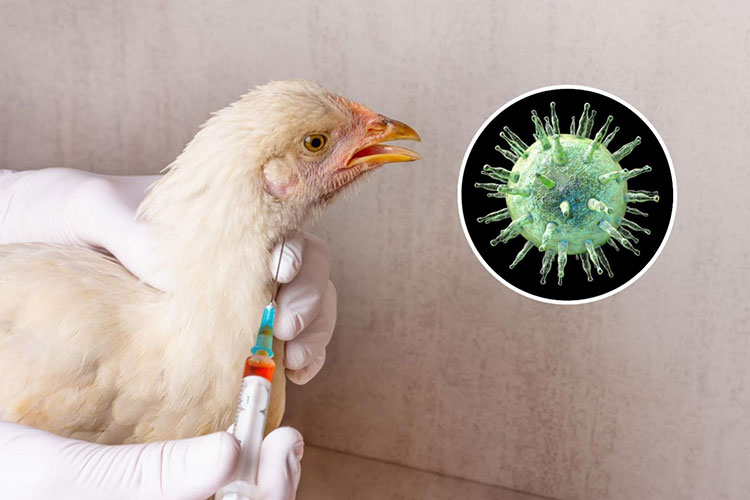
Avian Flu Vaccine For Chicken- Picture courtesy: Newsweek
Avian flu is very common in chickens and can cause moderate respiratory problems, for instance, coughing, and sneezing, and serious neurological issues, for example, fits, paralysis, or twisted neck. This may also result in decreased egg production and sudden chicken death.So, to keep chickens safe on poultry farms, homes, and ranches, an avian flu vaccine is developed. It protects birds from catching avian flu which tends to transmit quickly among flocks of birds.
This bird flu vaccine works by inducing immunity in the body. This starts the immune response and production of antibodies that neutralize weakened viruses or antigens. If the avian flu virus ever enters the vaccinated chicken, the immune response easily fights off it.
2.Can you explain some of the benefits that the avian flu vaccine for chickens offers to the community?
Like other human vaccines, the avian flu vaccine for chickens offers a great deal of benefits to communities, which go way beyond your local farms. By vaccinating chickens, you’re not only protecting your poultry feed but also safeguarding public health and financial growth. For your information, the advantages of avian flu vaccine for chickens are as follows:
Keeping Your Poultry Flocks Flu-Free
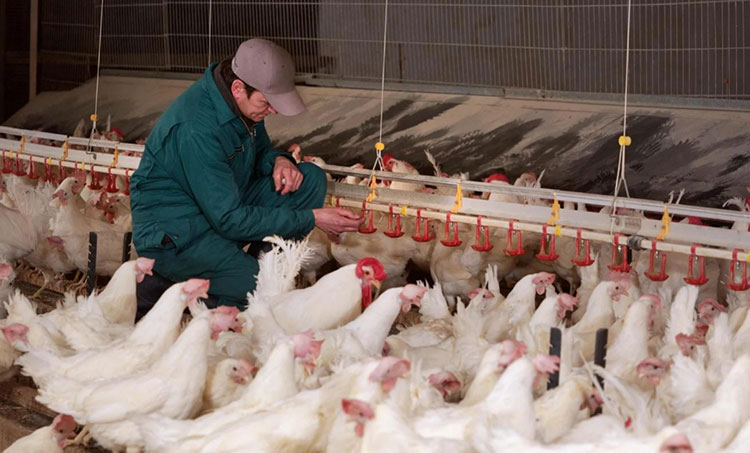
Keeping Birds Safe- Picture Courtesy: Farmers Guide
The most obvious benefit of the avian flu vaccine for chickens is that it prevents severe and contiguous bird influenza infection in your birds. Given how rapidly this disease circulates quickly and is often fatal. So, vaccination is key, it’s how you can stop mass deaths in chickens as well as other birds.
Lowers Disease Transmission to Humans
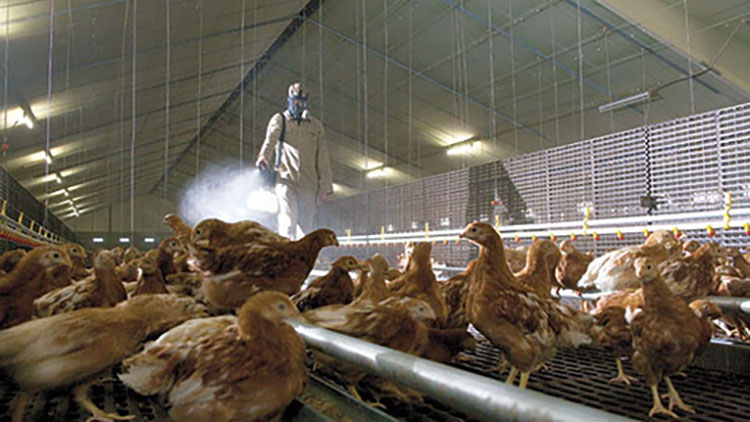
Chicken Vaccination- Picture Courtesy: Farmers Weekly
Believe it or not, avian flu viruses can also infect humans when the latter consume an infected bird. This is known as zoonotic transmission. With the avian flu vaccine, the transmission of the virus in flocks is reduced, which in turn decreases the possibility of human contact and following infection.
Reducing the Development of Superbugs
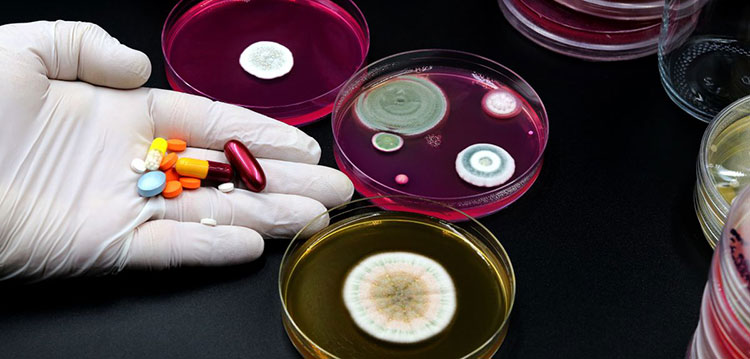
Antibiotic Resistance- Picture Courtesy: University of Oxford
Wondering how is that possible? Well, a smaller number of sick chickens means you don’t have to treat them with antibiotics frequently. With less antibiotic utility, you’ll have little chance of incident of antibiotic resistance in bacteria. Although, you’re right that avian influenza is a viral disease, what you don’t know is that sometimes birds develop secondary bacterial disease. And this necessitates the use of antibiotics.
No Mass Culling

No Mass Culling- Picture Courtesy: Farmers Weekly
You might’ve heard on the news about the mass culling (slaughtering) of complete flock chickens on poultry farms during an avian flu outbreak. This helps in containing the virus transmission. Due to this, poultry businesses suffer heavier meat and eggs losses. That’s why, you’ve avian flu vaccine to prevent mass slaughtering of animals. Thus, your consumers can get a consistent supply of eggs and meat throughout the year.
Supports Farmers
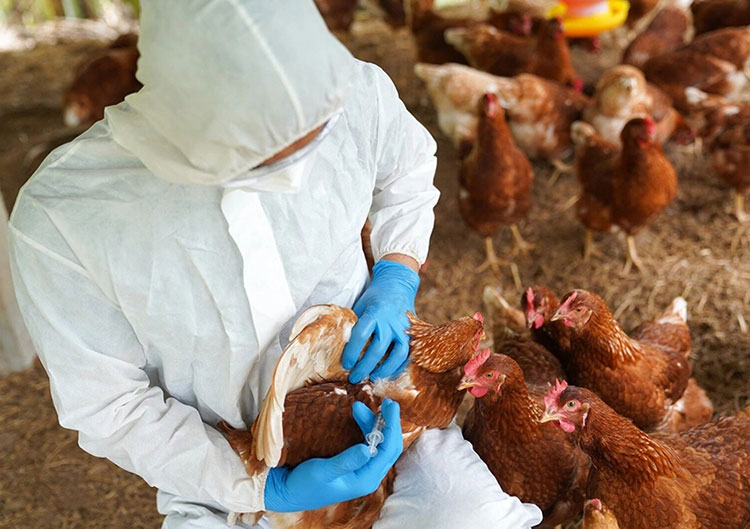
Supports Farmers- Picture Courtesy: Poultry Producer
For farmers, especially small business owners, chickens are their vital income and nourishing source. If an outbreak of bird flu occurs, their entire livelihood is lost. So, they should always be one step ahead of the avian flu virus by vaccinating their chickens. With this, they can easily have peace of mind and continue to earn a better living.
More Productive Farm
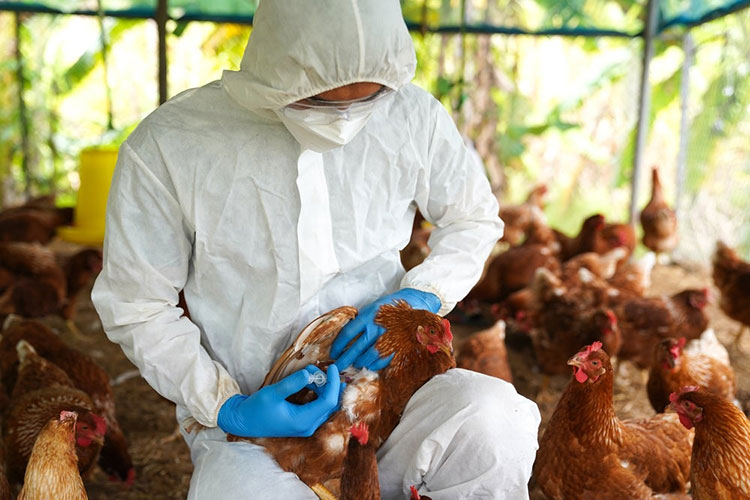
More Productive Farms- Picture Courtesy: Clinical Trail Arena
With vaccination, you’ll have more healthy chickens, which translates into more productivity and higher profits for your business. The reason is that vaccinated chickens show more growth, higher reproduction, and better egg output.
3.What steps do you take to create an avian flu vaccine for chickens?
Ever thought about how active ingredients or antigens are formulated into liquid products and packed into tiny vials? Creating an avian flu vaccine for chickens is not a one-step procedure, rather it involves many steps. That’s true, indeed, this product manufacturing largely mirrors animal vaccine preparation. For those of you who’re interested, here is a breakdown of the usual steps in avian flu vaccine preparation:
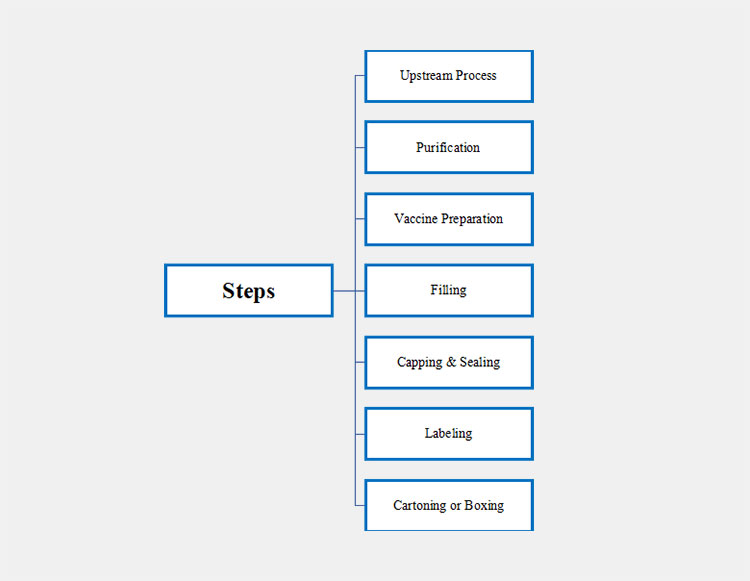
Steps To Create An Avian Flu Vaccine For Chickens
Upstream Processing
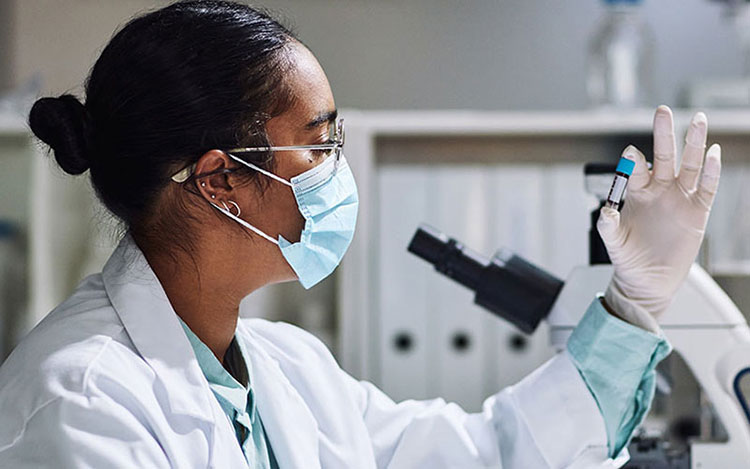
Virus Identification- Picture Courtesy: CDC
| Appropriate Virus Identification | Evolution is quite a common phenomenon in viruses, which you may read about in your biology books. So, it’s a known fact that the avian flu vaccine produced in the last flu season might not be successful in preventing the spread of new flu viral strains.
Thus, at first, different global organizations, like WHO meet to decide suitable strains for vaccine development. It is very important to closely match the vaccine with the viral strain for it to be highly immunogenic. |
| Virus Inactivation | If you’re preparing a live attenuated vaccine, your chosen pathogen strain must be weakened by cultivating it several times in non-natural hosts, or specific lines. You may also use genetic modification approaches to minimize its pathogenicity. After that, you’ll create an ultra-pure, well-tested, and stable stock of selected strains. This stock will form the base material for the preparation of the next vaccine batches. |
| Virus Inoculation | Now the actual vaccine production starts! For preparing standard inactivated avian flu vaccine for chickens, embryonic chicken eggs are usually used. The virus is injected for its propagation in eggs with the aid of incubators. Alternatively, what you can do is to use particular bird, mammalian, or insect cell lines for cultivating your viral subtype. |
Culturing and Harvesting

Culturing and Harvesting- Picture courtesy: Biochem
Like other vaccine production, inoculated eggs or cultures are loaded in large bioreactors. These tanks have the right temperature, humidity, and nutrient media conditions for the replication and growth of cells. Remember to cultivate your strains for several days to get the desired quantities of viral proteins. Once viral strains have attained your desired concentration, harvesting of fluids from bioreactors begins.
Purification
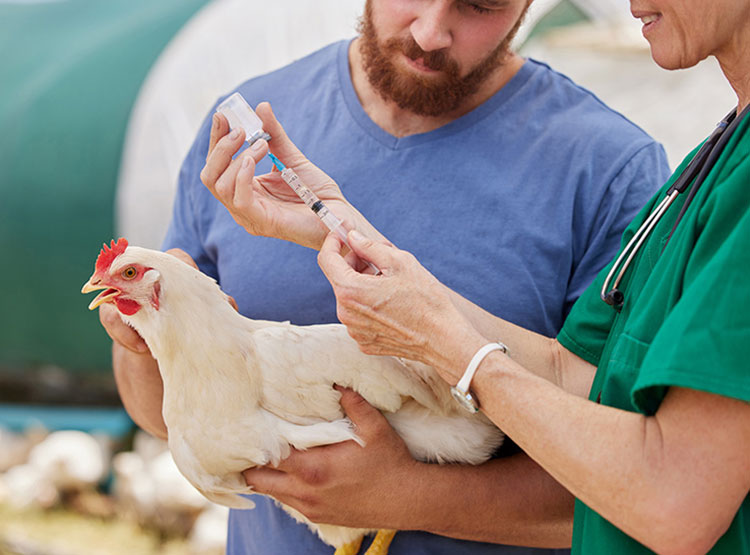
Purification- Picture courtesy: Modern Poultry
Before antigen purification, you first have to clarify your harvested fluid to filter out large suspended impurities or undesired substances, for instance, egg tissues, blood cells, or cellular fragments.
You’re already familiar with the fact that your desired viral antigen is mixed with left-over host proteins, DNA, RNA, or, other smaller fragments in harvested liquid. Subsequently, it becomes very necessary that you purify your preferred antigen with approaches, like, membrane filtration or chromatography.
Vaccine Preparation
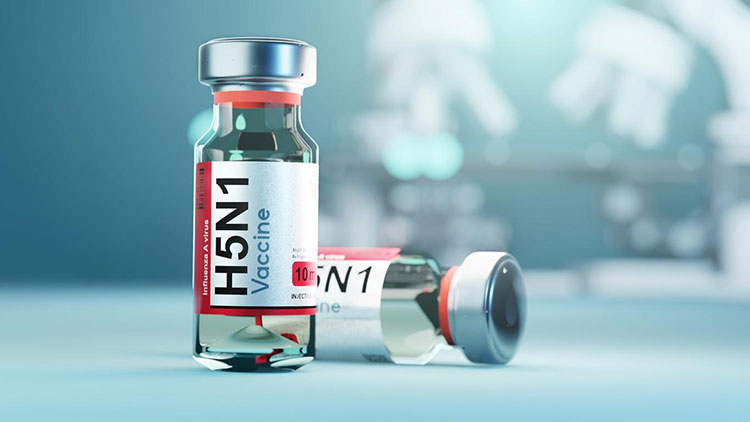
Vaccine Preparation- Picture courtesy: CIDRAP
When you’ve purified antigen or virus ready, you can start preparing your liquid avian flu vaccine for chickens. For this, you’ll mix antigen/virus with liquid media (usually sterile water for injection), adjuvants (to enhance immunity), stabilizers, buffers, and preservatives.
Finally, you’ll dilute your mixed formulation to a predefined concentration in order to achieve the required dose volume.
Filling
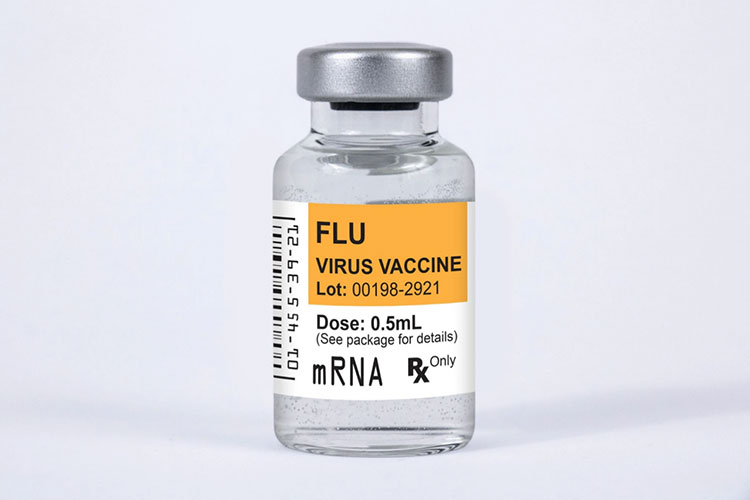
Filling- Picture courtesy:Monash Lense
Yes, it’s time to pack your avian flu vaccine for chickens. You can begin packing by first loading your prepared formulation solution into sterile containers. Don’t forget that vaccine formulation and other packaging steps must be performed in cleanrooms with proper ventilation to remove contamination agents from the environment.
Capping & Sealing
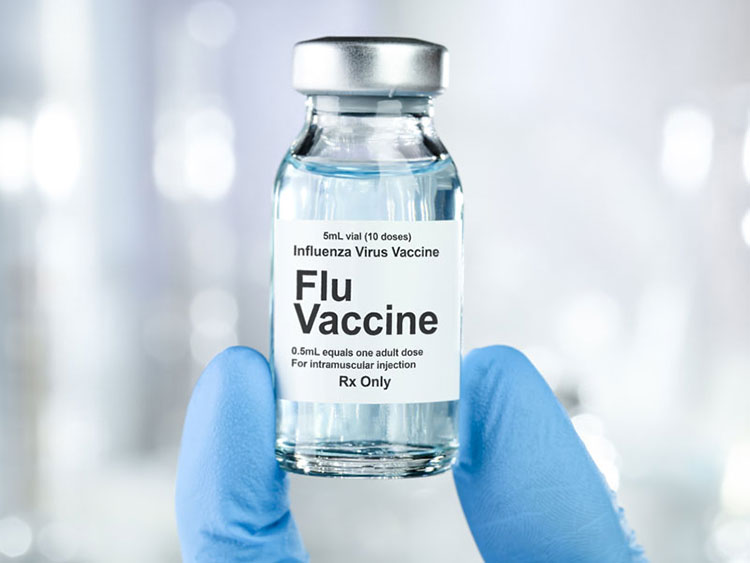
Capping and sealing-Picture courtesy: FFAP
After filling, your next step will be to secure your containers. This is generally done by placing stoppers on vials and crimp-sealing them with aluminum caps. In this manner, you’ll achieve double container protection.
Labeling
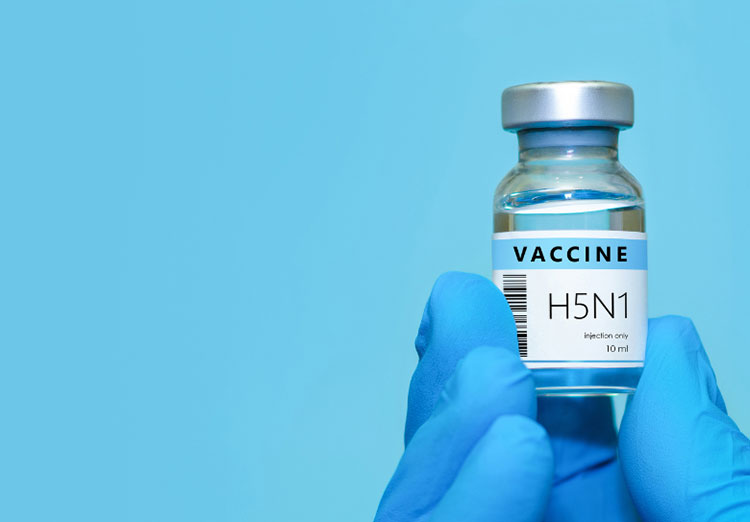
Labeling- Picture courtesy: Formaspace
It is a vital step, as it communicates information about the avian flu vaccine for chickens to vets and farmers. Labeling is carried out when vials are moved to labelers that stick labels with necessary information on vials.
Cartoning or Boxing
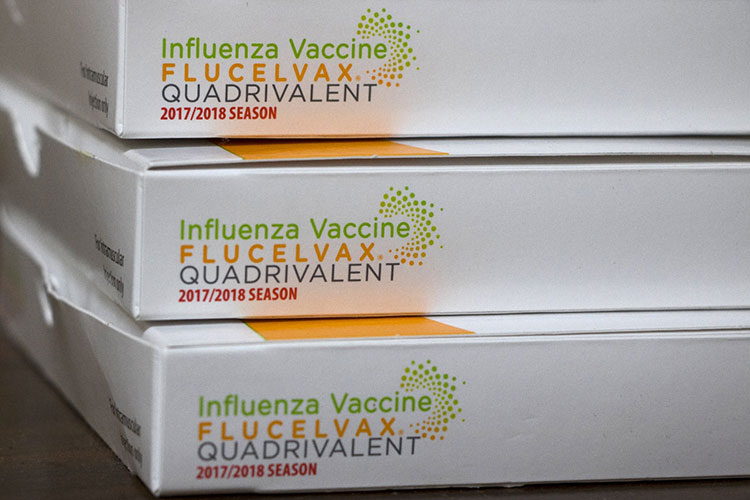
Carton- Picture courtesy: STAT News
In the final stage of production, you’ll box your containers with the assistance of a cartoning system. Here you’ll notice that vaccine packs are conveyed to the container filling unit when boxes are erected and folded. Then, containers are placed in boxes, and sealing of boxes with glue or tapes happens.
4.What kinds of chickens are vaccinated by the avian flu vaccine for chickens?

Avian Flu Vaccination for Chicks- Picture Courtesy: Afrimash
To answer your question in a few words. Almost every kind of chicken needs to be vaccinated. Especially, the ones in poultry and backyard farming. Here you can find a brief overview of chickens that are vaccinated with the avian flu vaccine for chickens:
| Commercial Broiler Chicken | First and foremost comes your broiler chickens. On farms, they’re specifically grown to produce meat. They’re usually raised in large numbers and close sheds, so they pose a very high risk of a bird flu outbreak. Thus, they’re immunized quite early in their lives, typically when they’re hatched. Due to this, they’ve instant protection and a lower chance of getting disease. |
| Laying Hens | As the name indicates, these are the hens that lay eggs. And their laying cycle is several months, which means that they’re more likely to contract avian flu. For this, farmers must vaccinate them in order to protect them and ensure a smooth supply of eggs. |
| Breeders | You can imagine them as parent stock for chicken. They are raised to lay fertile eggs for hatching. These chickens are meant for reproducing so as to produce baby chicks. By giving vaccines to breeders, you’re protecting mature chickens. Moreover, studies have shown that if vaccinated, hens will pass maternal antibodies to their offspring. Consequently, they get passive immunity early in life. |
| Backyard Chicken | If you like to grow chickens in your backyard, you must give the avian flu vaccine to them. As they’re at higher risk of getting infection through contact with wild birds. |
5.How do vets give avian flu vaccine for chickens to birds?
Guess what? There are quite a number of ways to administer avian flu vaccine for chickens to poultry birds. The vaccination method generally depends upon the form of bird flu as well as the age of your birds. Some of the clever ways of vaccinating chickens are penned in the section below:
Injection
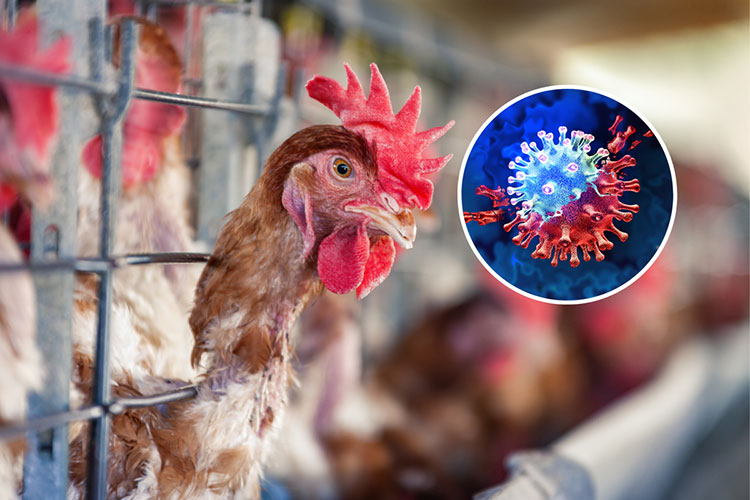
Injection- Picture Courtesy: Newsweek
Like humans, injections are a very frequent way of administering the avian flu vaccine for chickens. Normally, vets, poultry workers, or farmers inject these vaccines under the skin tissues or into muscles. Given by hand with one bird at a time. With this mode of vaccination, your birds will have strong and lasting immunity.
Drinking Water

Drinking Water Vaccination- Picture Courtesy: Keasler Nutrition
Quite an easier way to give the avian flu vaccine. You’ve to just mix the vaccine in clean drinking water for birds. Hence, birds are vaccinated when they’re drinking water. Best for mass vaccination of the flock, as you don’t have to inject birds individually. This saves you time.
Spray
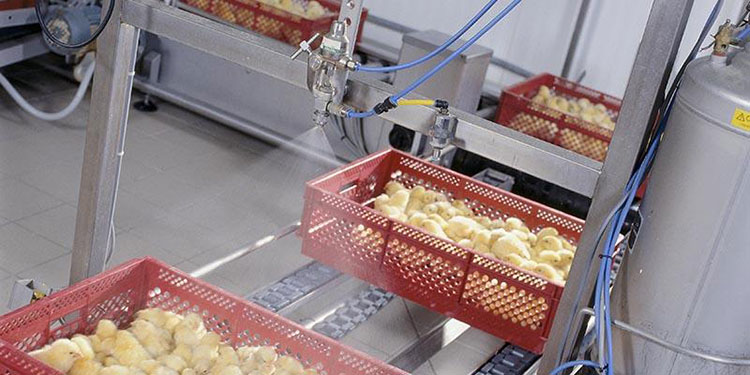
Spray Vaccination- Picture Courtesy: Royal Pas Reform
Offer simple means of vaccinating day-old chicks in hatching areas. The avian flu vaccine is available in fine mist form and is sprayed over birds in hatcheries. This spray falls on birds and then they inhale it.
Eye Drop or Nose Drop
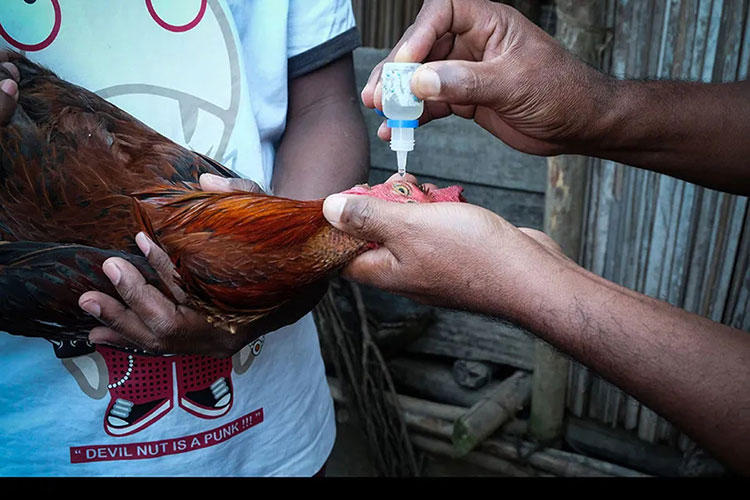
Eye Drop Vaccine- Picture Courtesy: New Vision
In this method, vets have to put a small drop of vaccine in the eye or nostril of your chicken. It is proven to be a very effective approach for delivering some forms of live avian flu vaccines. Besides this, you’re assured of the fact that vaccines are instantly absorbed in the blood of birds by passing the mucous membrane of the eyes and nose.
6.Can you present a list of machines that manufacturers use in making avian flu vaccine for chickens?
Behind tiny vials of avian flu vaccine for chickens, there is a whole array of high-tech machines that work in complete harmony. To have your perfect vaccine dose, you should integrate a variety of systems into your productions. So, for your learning, a complete order of machines present in avian flu vaccine manufacturing is explained in the following section.
Fermenters
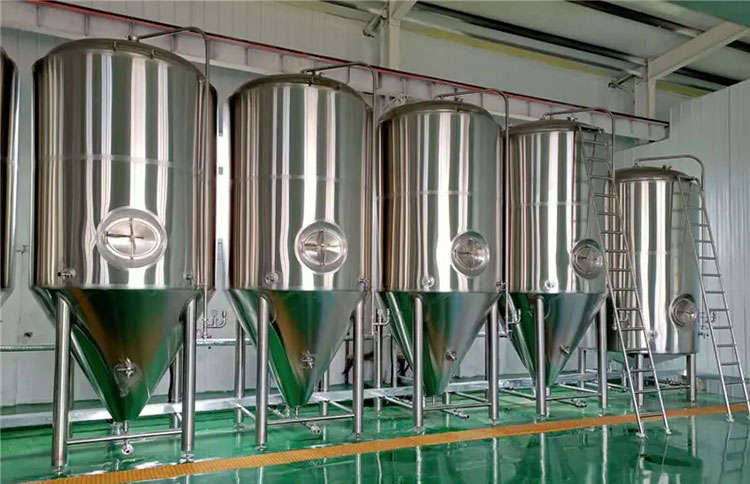
Fermenters- Picture Courtesy: Micet Group
Generally, for upstream processing like incubation of egg-based systems or cell culturing, you’ve got a fermenter machine. You may also know it by the name of bioreactors. Structurally, it consists of large vessels in which you load nutrient media, cell cultures, or fertilized eggs. Still, you should remember to monitor its temperature, humidity, and air to have ideal virus throughput.
Harvesting Device
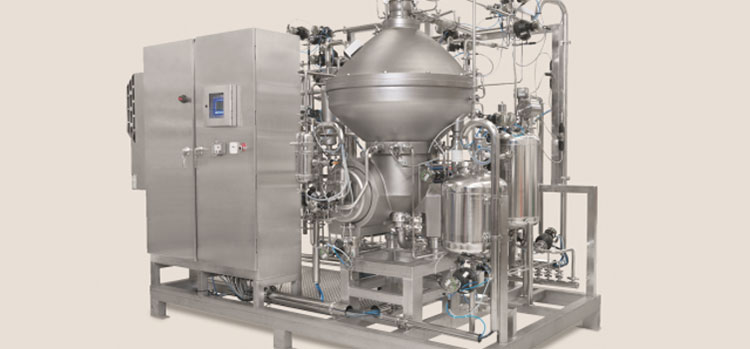
Harvesting System- Picture Courtesy: Alfa Laval
After virus propagation, now you’ve to collect cell culture or egg fluid media. For this, a cell harvesting system is used. In this device, your cell or egg cultures are isolated from the nutrient media. It may employ filtration units to extract viral particles from the rest of the media.
Centrifuge Unit
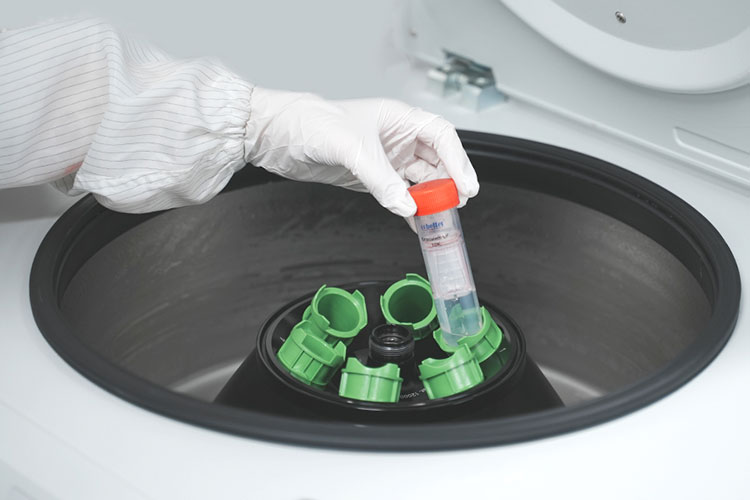
Centrifuge Unit- Picture Courtesy: Cobetter
You’ll find this device very commonly in the avian flu vaccine for chicken preparation. How it works? Simply, by using density differences between solid particulates and the surrounding liquid. With high-speed rotation, it accelerates the settling of impurities that typically happen during sedimentation. Frequently, it is used for starting clarification of the harvested liquid.
Filtration Devices
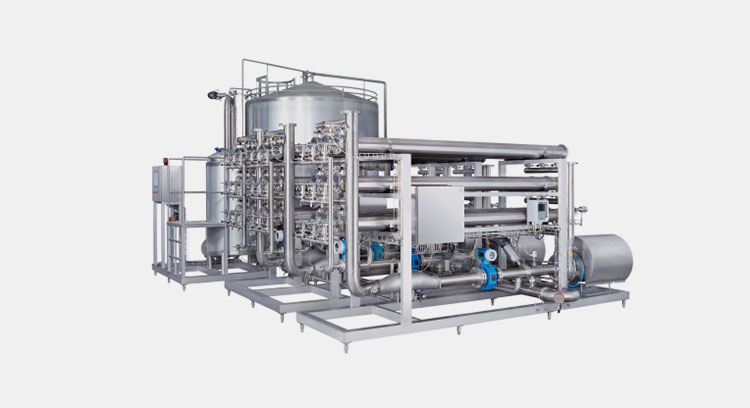
Filtration Devices- Picture Courtesy: Alfa Laval
Various kinds of filter systems are present in vaccine creation to purify viral particles from the smaller dissolved impurities. You may see depth filters that help in primary filtration by eliminating large particulates. Also, you’ve ultrafilters to clear out unwanted salts, and solvents. Whereas, sterile filters aid you in end-stage filtration of your bulk antigen and prepared vaccines. They’re very essential in removing residual microbes and their byproducts.
Chromatography Skids
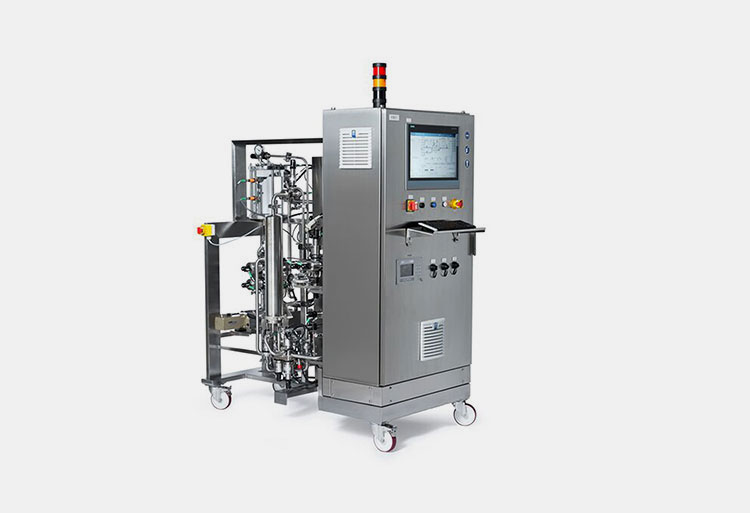
Chromatography System- Picture Courtesy: Sigma-Aldrich
Certainly, the preparation of recombinant subunit avian flu vaccine heavily relies on chromatography columns. You see that there is a variety of chromatography systems, such as ion exchange, size elution, or even affinity chromatography by which you can have a pure form of viral antigen.
Picture these systems as large tanks with resins and pumps to move your antigen solution.
Water Purifying System

AIPAK Engineering Water Purifying System
One of your most central systems in the creation of avian flu vaccine for chickens. As you are undoubtedly aware ultrapure water is key to formulating a highly pure vaccine. Hence, every vaccine production must have a water treatment system. Absolutely, with this, you can remove ions, chemicals, salts, debris, and organic matter from your source water and have 99.9% pure water.
Vial Filling Line
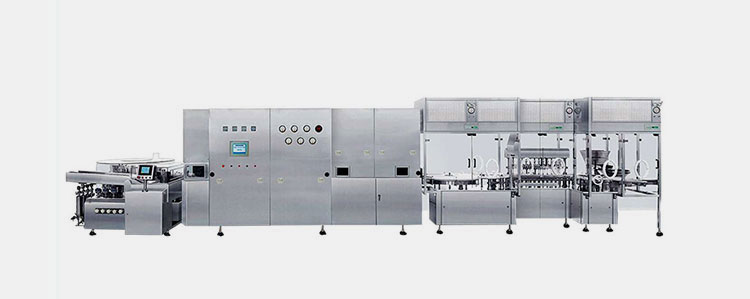
AIPAK Engineering Vial Filling Line
Imagine a vial filling line as the heart of your avian flu vaccine production. Because it is the main equipment that fills vaccines in sterile vials. Interestingly enough, it is not a single machine but rather a complicated setup with numerous automated machines, such as:
| Unscrambling Machine | On the left side of this production line, you can find a piece of equipment with a conveyor and hopper. This is called a vial unscrambling unit. You can organize your randomly loaded vials by using this unit. Its function is to position vials in an upside configuration on a conveyor with a fixed distance between them. This makes it easier for systems present further down the line to process vials. |
| Vial Washing System | Washing of vials is pivotal in preventing contamination. That’s why, you’ve an ultrasonic washing unit in vial filling lines. Often, it uses high-pressure water spray and supersonic waves to thoroughly clean vials of impurities. |
| Depyrogenation Tunnel | After the vial washing system, you’ll find a large rectangular device. This is your depyrogenation tunnel. Resembles a large tunnel equipped with hot air units. As the name indicates, this unit removes pyrogens, toxins, spores, or cells of microorganisms present inside and outside of vials. |
| Vial Filling and Stoppering Unit | On the right side of this production line, your core vial filling equipment is present. With its help, you can precisely fill your vials with vaccine formulation. Then, you’ve got a vial stoppering unit that secures rubber stoppers on filled vials. |
CIP/SIP Unit
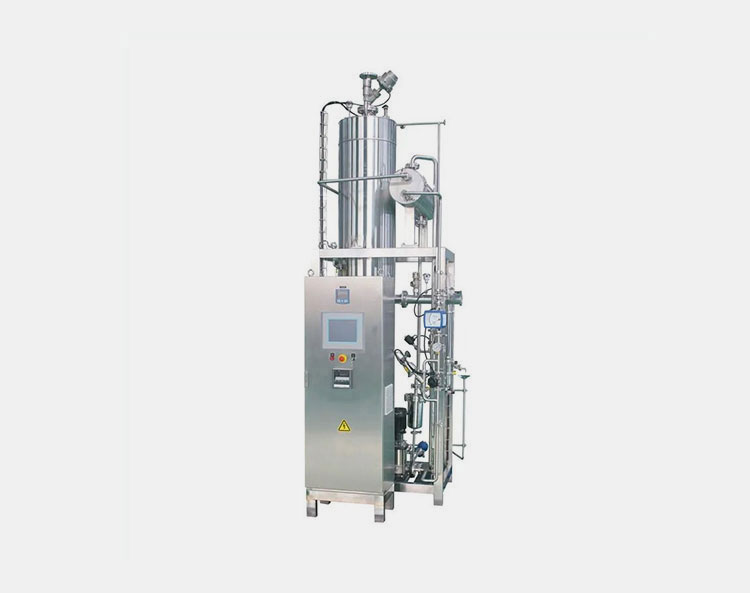
AIPAK Engineering Clean Steam Generator
How can you clean your systems? Quite easily with clean-in-place or sterilize-in-place units. They often have integrated steam generators that create steam using deionized water. Inside of your mixing tanks, bioreactors, pipes, and, machines are automatically washed using these units. The best part: you don’t have to disassemble your equipment.
Pharmaceutical Autoclave
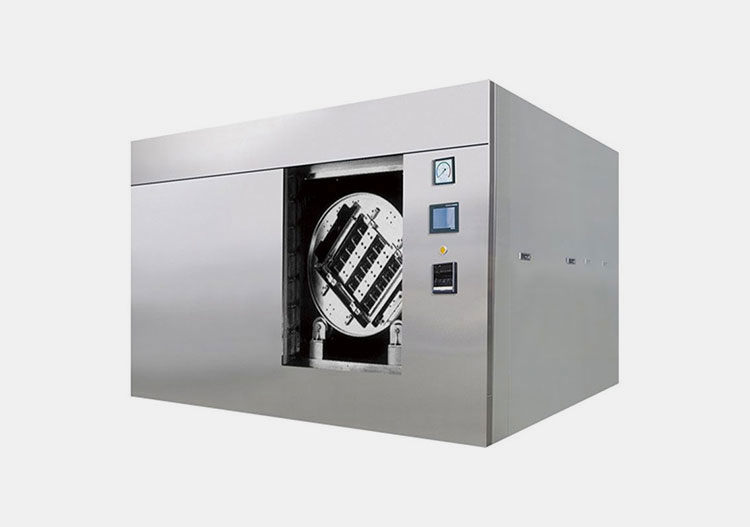
AIPAK ENGINEERING Pharmaceutical Autoclave
In order to maintain the sterility of the product, after filling and sealing vials, these containers are placed in a pharmaceutical autoclave. Hot steam and pressure are generated in this machine to kill microbes. The cell membrane of microbes is destroyed by heat and pressure, consequently, resulting in microbial death.
Labeler

AIPAK Labeler
Subsequently, after final sterilization, vaccine-containing sterile containers are conveyed to the vial labeler. Where, you’ll spot various labeling heads, presses, and glue-applying devices functioning together to apply labels on containers.
Cartoning Machine
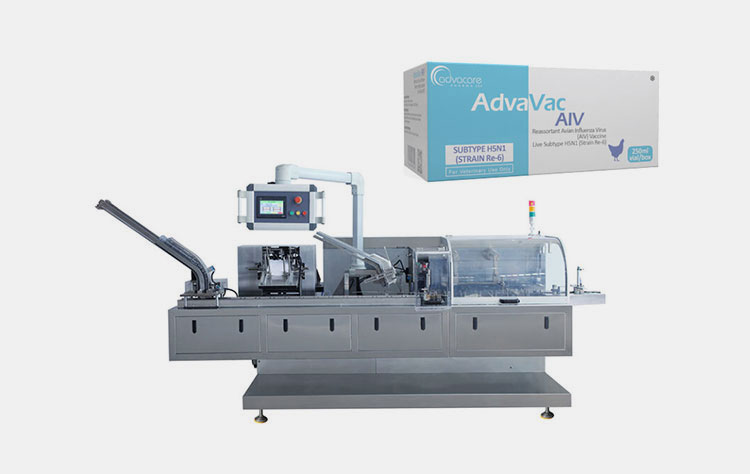
AIPAK Cartoning machine
In the end, you’ll catch sight of a cartoning machine that smoothly positions your labeled vaccine containers in strong cartons. Normally, its job is to erect, fold, load, and close cartons. Sometimes, this equipment also has leaflet insertion tools that assist in the insertion of product pamphlets along with vaccine vials in boxes.
7.What are the usual ways by which avian flu vaccine for chickens is packed?
Are you thinking about packaging styles for the avian flu vaccine for chicken? Learning about them will surely aid you in identifying the right formulation on pharmacy shelves. Let’s read about common packaging formats for bird flu vaccines.
Vials
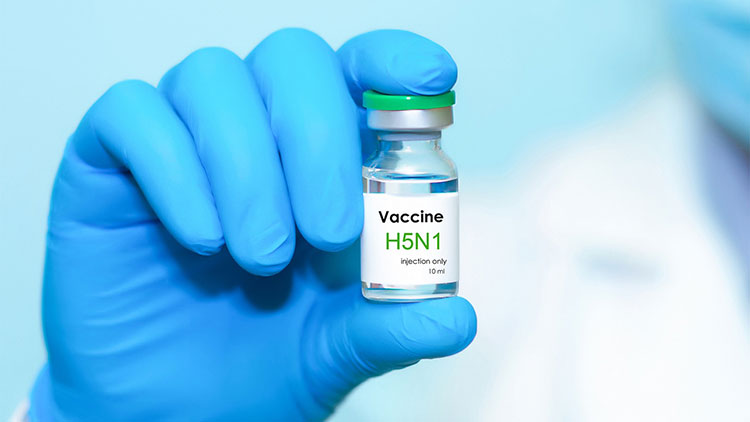
Glass Vials- Picture Courtesy: Farm Progress
Glass is the most common material for preparing vials. And yes, you’ll see the avian flu vaccine for chickens frequently packed in vials. They don’t only have single-use vaccines but in many cases, they pack multiple doses of vaccines as well. Shape-wise, they’re cylindrical with narrow necks. More often than not, you may see them secured with rubber stoppers and crimp seal.
Have up to 1 ml to 250 ml of vaccine dose. Best for vaccinating one chicken or small groups of chickens.
Bottles
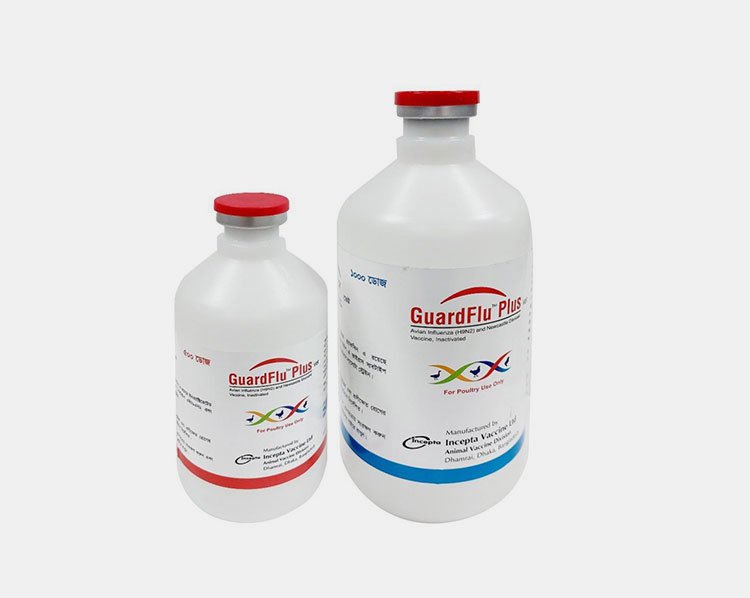
Bottles- Picture Courtesy: Incepta
Most of these containers are manufactured from plastic to provide shatter resistance. You will get avian flu vaccine doses in bottles for mass vaccination of your flock. They are much larger than average vials and pack about 250-500 ml of vaccine.
8.When is the time to administer your chickens' avian flu vaccine for chickens?
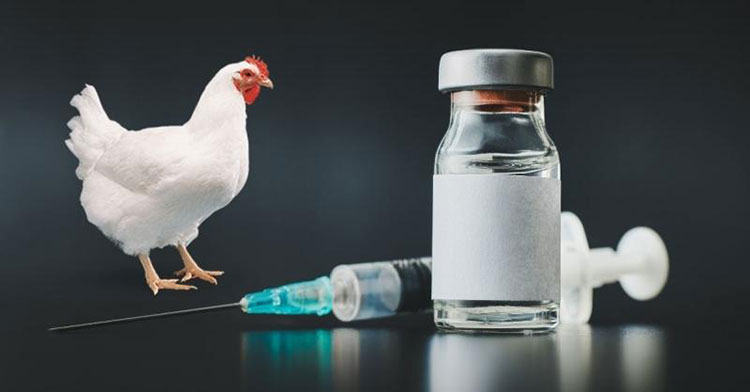
Timing of Avian Flu Vaccination- Picture Courtesy: Poultry Producer
Timing is everything even for vaccinating chickens. Needless to say when to vaccinate your chicken varies with their age, region where you’re, bird type, as well as vaccination kind. Here are some golden rules for vaccination:
Day-Old Chicks
If you’re in high-risk regions, so you should vaccinate your one-day-old chicks. In this manner, their small immune systems kick start instantly.
2-4 Weeks
For injectable vaccines, this is the most common time window. Because at this period, your chickens are quite strong and, hence, can easily handle vaccines.
Before Flu Season
In areas where avian flu unexpectedly or seasonally spreads, you should proactively vaccinate your birds. Keep in mind to vaccinate them before migratory birds carrying the virus fly in your zones.
9.Is the avian flu vaccine for chickens for one-time or do your chicks need regular boosters?
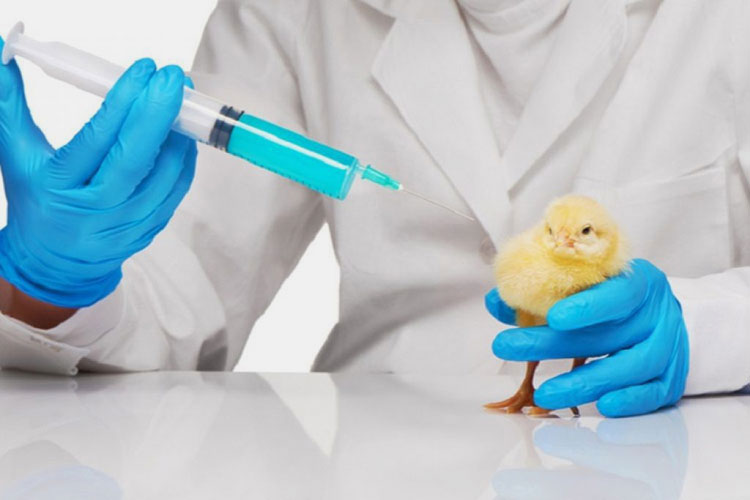
Avian Flu Vaccine- Picture courtesy: afrimash
To answer you shortly, your chickens not only need primary dose but also regular boosters to stay healthy. As you have already learned chickens are typically vaccinated after 1 to 4 weeks of their hatching. With that one shot, they can’t stay immunized. That is where boosters come into play.
The reason boosters are essential is because they help in building strong immunity. Produce newer antibodies if the virus is changed. Offer protection during peak bird flu season. Indeed, you’ve to give them boosters after 8-12 weeks.
In the case of breeders and laying hens, they receive boosters before breeding and laying eggs. After that, repeated doses during their reproduction cycle.
10.What could be the shelf-life of avian flu vaccine for chickens?
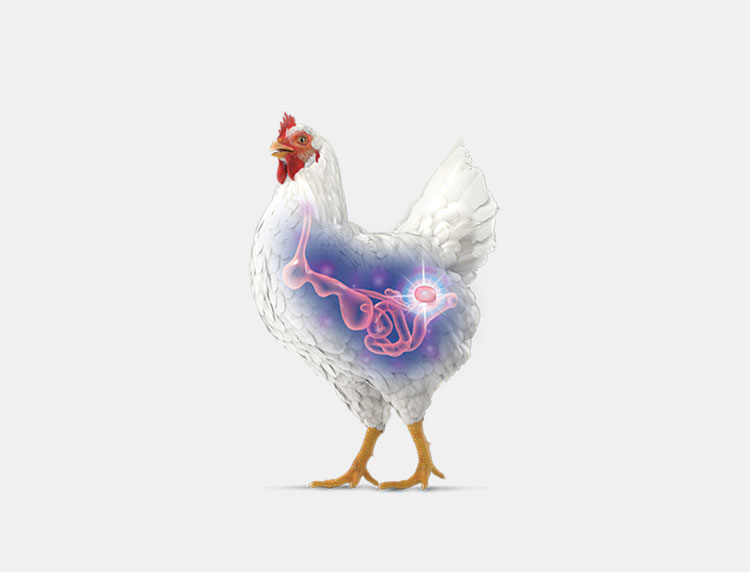
Shelf-Life Of Avian Flu Vaccine For Chickens- Picture courtesy: Boehringer Ingelhei
No one wants to give avian flu vaccine for chickens to their birds that’s gone bad. Hence, it is imperative that you and other farmers and pet owners must learn about the shelf life of the product beforehand.
Killed Viral Vaccine
One of your common avian flu vaccines for chicken vaccine. With an expiry period of about 12-24 months. For storing, refrigerate it at 2-8 degrees centigrade. Under no circumstance, freeze it, especially, if you’ve got an oily-based vaccine, as doing so will ruin your oily emulsion.
Live Attenuated Vaccine
Contains a weakened viral pathogen, so lasts about 4-12 months. However, you should keep it at ultracold or freezing conditions with a temperature of -20°C or even -70°C. Because it is very sensitive to heat.
Recombinant or Vector Vaccine
Yes, they’re more advanced versions of avian flu vaccines for chickens. Frequently, are created using genetic modification procedures. Based on their ingredients, they’ve variable consumption periods. But it is safe to say that generally, they’re best for 12-18 months. You can store them at 2–8°C.
11.What kind of glitches can occur during the preparation of avian flu vaccine for chickens?

Problems and Solution related to Avian Flu Vaccine for Chickens
Although your avian flu vaccine for chickens preparation seems like a well-oiled machinery, however, not every batch meets the criteria for quality standards. Something may go wrong during certain steps, which affects everything down the line. Despite all that, you should take it easy and read the following answer to learn about solutions to various operational problems:
Variations in Either Temperature of pH
| Expected Problems | Their Remedies |
| Chances are you’re familiar with the fact that viruses or their antigen products are quite delicate and likely to change or degrade if environmental conditions like pH or temperature fluctuate. As a result, you might’ve decreased product yield or more possibility of viral mutation. | Give a shot to remedy this trouble:
To maintain ideal growth settings in your bioreactors, you can use automated monitoring controls that keep pH, temperature, humidity, and, airflow under a desired limit. Also, calibrate or service your machine sensors on a regular basis so that they can sound alarms when they sense deviations from the set limit. |
Instability of Oil-Adjuvant Vaccines
| Expected Problems | Their Remedies |
| You probably would’ve noticed that your oil-adjuvant vaccines experience phase separation. With particles settling down at the bottle. This lowers vaccine potency. | You may consider taking these actions to fix this issue.
To begin with, you should install homogenizers or high-shear mixers in your production. They give you a stable emulsion. Also, it is recommended to carry out stress analysis on ingredients to know beforehand to what extent your end emulsion is stable. The use of pharmaceutical-approved adjuvants that are compatible with your ingredients and active components aids you in attaining stable emulsions. |
Differences in Container Dosing
| Expected Problems | Their Remedies |
| A big no-no in your avian flu vaccine for chickens is variability in vaccine dose while filling. Yes, sometimes, you end up dispensing more active components in some of the vials than others. | With simple fixes, you can easily skip these problems. For example, you should install precise filling machines in your plant. And they must have automatic volume-checking devices. To go around this issue, you can also use spectrometers to monitor dose accuracy in your vials. |
Left-Over Chemical in Vaccine Formulation
| Expected Problems | Their Remedies |
| Did you find leftover inactivation compounds, such as formalin or adjuvants in your vaccine? If they’re at higher than unsafe concentrations, patient health will be affected. | You can try these solutions to address this challenge, for instance, implement thorough cleaning, washing, and purification practices of vials and other tools. Moreover, you should test each batch using different examinations to ensure there is no residual chemical in the product. |
Conclusion
With the avian flu vaccine for chickens, you can immunize your birds and keep them safe from catching bird flu during an outbreak. Absolutely, regular vaccination decides the future of poultry. By going over this guide, you’ve hopefully gained a clear understanding of how this vaccine works, what systems are used in its making, when to vaccinate your chickens, how to safely store your vaccine, and how to troubleshoot occasional production glitches. Still have questions? Or ready to buy machines for avian flu vaccine production? Just contact us today at AIPAK ENGINEERING. Our team is ever ready to bring your dream of vaccine manufacturing to life!
Don't forget to share this post!
CONTACT US
Tell us your raw material and project budget to get quotations within 24 hours.
WhatsApp Us: +86 181 7101 8586
 Tell us your material or budget, we'll reply you ASAP within 24 hours
Tell us your material or budget, we'll reply you ASAP within 24 hours
